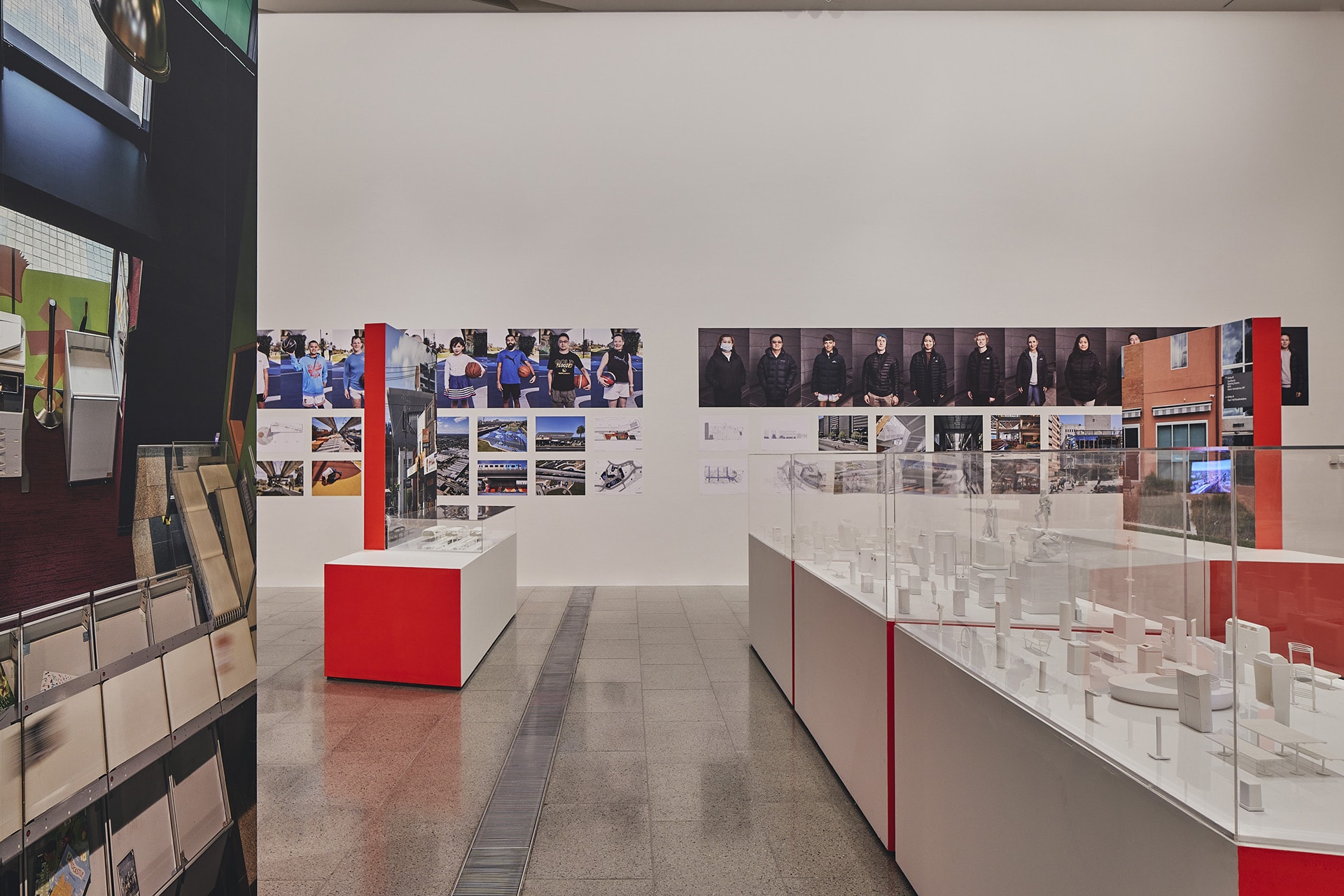Civic Architecture
Free entry
The Ian Potter Centre: NGV Australia, Fed Square
Level 3
Greater Melbourne has grown by more than a million people in the past decade, with most growth happening in the central city – just look up at the towers blooming in the north of the CBD and at Southbank – and at the peri-urban edges, including Cranbourne, Craigieburn and Werribee. Melbourne is booming, but the urban development resulting from this unprecedented population explosion appears messy, unruly and wild, and it often seems like no style or rules are guiding the growth. Anything goes: residential towers look like office blocks, suburban houses farewell the backyard, and public space is driven by private interests.
The rise in population, and this urban wildness, has been matched by an increased investment in new architecture projects to provide anchors in the chaos; that is, buildings and places that provides a w function. These buildings are the contemporary civic centres.
The civic centre is traditionally a building dedicated to the services and facilities that help a town function, such as courts, municipal offices, council chambers, galleries and swimming pools, all centralised in one place. The civic centre not only co-locates public facilities, but also provides focal identity to its surrounds. The twenty-first-century civic centres of Melbourne continue this tradition by combining hybrid programs under one municipal and metaphorical roof.
Civic Architecture is a survey of five award-winning civic projects by Melbourne architects and landscape architects that have been catalysts for transformation in different neighbourhoods, including in Dandenong, Broadmeadows and Geelong. The works are presented through typical architectural communication conventions: photographs, drawings and models. A further layer of photography is added that captures the everyday use of these projects, and the people that use them.
Through the gallery display, these architects demonstrate different design strategies to create buildings and places that support and express the citizens who inhabit them – the amplification of popular symbolism, the celebration of cultural memory, the physical connection of previously separated communities – providing a plurality of spaces.
The exhibition expands civic architecture’s concept of scale, from buildings and places built to explicitly support cities and communities to other architectural projects that display a civic duty. One project by Simulaa presents street furniture, utilities and objects found in these locations, such as news pillars, payphones and an Australia Post box, showing that despite the efforts of government to control public space, the constant upgrade of public services accumulates over time.
The places, buildings and objects displayed in Civic Architecture are a record of our times: they reflect the cultural identities of their locations and the types of services required to support the people residing there. These projects also challenge the notion that many buildings in the twenty-first century can be distinguished by a lack of communication, in terms of their symbolic context or function. These civic projects provide a counterpoint – a confident expression of a rapidly changing social, cultural and economic landscape – and resolutely contribute to the social life of the city.
Timothy Moore, Curator of Contemporary Design and Architecture / Melbourne Design Week, NGV
